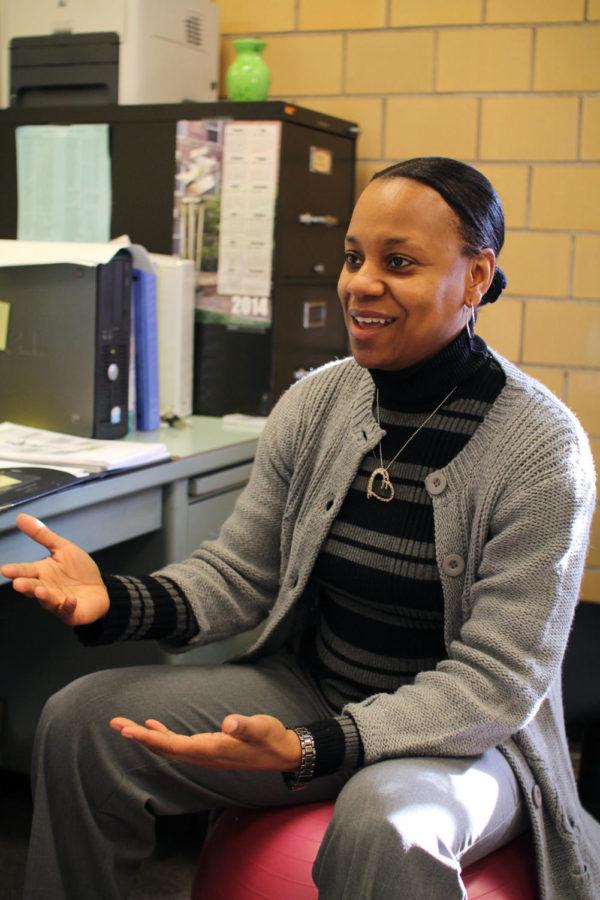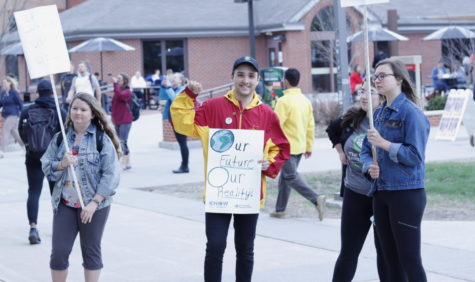Kinesiology lecturer traveled to Kenya to teach importance of exercise
Miranda Cantrell/Iowa State Daily
Tyanez Jones, lecturer in kinesiology, traveled to Kenya for two weeks this past semester as part of a medical mission to raise awareness about exercising. Her motto was “Fan Ya Mazoezi,” which is Swahili for “Do Exercise.”
January 29, 2014
College students sometimes struggle to fit exercise into their daily schedule because of school, work or other commitments. That struggle is not just a concern for college students, though.
Tyanez Jones, a kinesiology lecturer, traveled to Kenya last semester to teach the importance of exercise to Kenyan natives.
Jones traveled to Kenya for 14 days as an exercise psychologist to raise awareness about the benefits of exercise to the Kenyan community.
Initially, Jones set up her trip through the Community Life International Missions Association, to set up a health clinic open to the Kenyan public. Each station would explain the significance of physical and medical health.
Natives from 42 tribes would travel about six or seven miles each way to the campsite to receive non-conventional medicine treatment. Jones provided her knowledge of different exercises to numerous age groups, primarily with the Masai tribe.
“I had to convince the staff that was already established there that exercise is necessary,” Jones said.
After Jones successfully convinced the medical staff, she was ready to aid the Kenyan public as their first exercise psychologist.
“People there were already very active,” Jones said, “they walked everywhere they went. [They walked] to the market, school or the medical tents.”
Jones and the medical staff had different stations set up for patients to be evaluated, taught and aided to receive the right exercise to help them feel better. She also showed her patients how certain exercises can be used to prevent pain.
When patients came to her tent, they would point to the joint or muscle that was bothering them. Jones had a translator by her side that would assist her in communicating with the natives.
Battling the language barrier, Jones learned a few phrases in Swahili, which is their native language. For example, Jones could articulately say in Swahili how many times a day people should do the exercise or what kind of prescription they should take. Either Jones would show them exercises that would lessen the pain or have her assistant say what she couldn’t explain in Swahili.
Jones also provided exercise bands, jump ropes and soccer balls to the children and adults who came to the campsite.
“The children were very excited about the soccer balls, so they played as soon as they got their hands on the ball,” Jones said. “However, they were ecstatic about the jump ropes, too, and we ended up teaching them some jump rope games.”
In Jones’ mind, she already knew she wanted to focus on upper and lower body exercises. Depending on the patient’s age, she had several exercises to present. For example, squats, lunges, hip flexors or target muscle groups like pectorals, biceps or triceps, were Jones’ focus.
Jones firmly believes that exercise makes people feel good. It is beneficial to incorporate into a daily routine.
“Exercise can improve people’s activity threshold,” Jones said. “Exercise is used to strengthen and improve muscles.”
Although language was a major barrier into teaching over in Kenya, Jones said that the experience was nothing she had ever seen before. She learned that it is important to build relationships with people before you can teach.
“Hopefully, [the Kenyan natives] thought it was enjoyable as much as I did,” Jones said.
Jones also hopes that they remain active and continue to motivate and challenge each other to do their best.

















